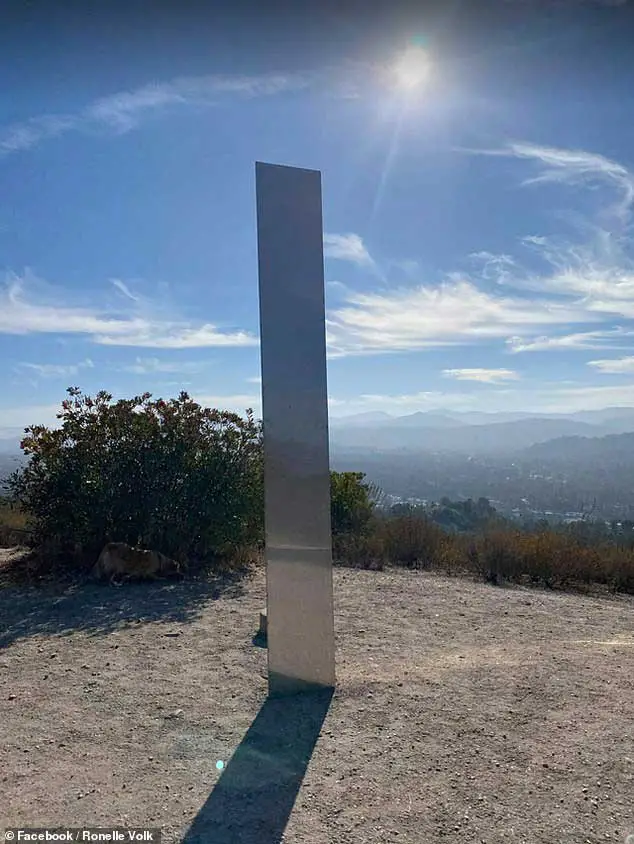Third metal monolith suddenly appears, this time in California, matches the ones in Utah and Romania

The monolith mystery continues as a third metal pillar suddenly appears in California.
- The metal pillar was spotted on top of California’s Pine Mountain.
- Similar monoliths briefly appeared in Utah and Romania last month.
- Adventure tour guide Sylvan Christensen admitted to being one of the culprits who tore down the monolith in Utah.

After two monoliths appeared in Utah and Romania, a third pillar has been spotted in California.
The metal structure was spotted on top of California’s Pine Mountain in Atascadero. According to the Daily Mail, the pillar is 10 ft tall and 18 inches wide. In addition to this, it is estimated to weigh around 200 lbs and is made of stainless steel. It is important to note that unlike the monolith found in the Utah desert, this pillar is not attached to the ground.
What is more, this monolith is the only remaining pillar as the ones found in Romania and Utah suddenly disappeared.

Four men tore down the monolith found in the Utah desert.
The first mysterious monolith appeared on November 18 in the deep desert in Utah. As per the Daily Mail, photographer Ross Bernards visited the monolith on Friday and described how four men had appeared out of the blue, dismantled the monolith, and carried it away.
Adventure tour guide Sylvan Christensen has reportedly identified himself as one of the four men who tore down the Utah monolith. He uploaded videos depicting the demolition of the metal pillar on TikTok where it was viewed over 100,000 times. Alongside the TikTok video, Christensen posted the following caption: “Don’t abandon your personal property on public land if you don’t want it to be taken out #utahmonolith #leavenotrace”.

Christensen explained why they removed the Utah monolith.
In a statement to the Daily Mail, Christensen explained that they are not proud of what they did. However, he notes that the monolith was harmful to the land and that there are ‘clear precedents for how we share and standardize the use of our public lands, natural wildlife, native plants, fresh water sources, and human impacts upon them.’ He further disclosed that while they completely support artists and their work, there are ethics that have to be followed. Christensen revealed that the damage caused by the Utah monolith ‘was not even close to the damage caused by the internet sensationalism and subsequent reaction from the world’.
This land wasn’t physically prepared for the population shift (especially during a pandemic). People arrived by car, by bus, by van, helicopter, planes, trains, motorcycles and E-bikes and there isn’t even a parking lot. There aren’t bathrooms— and yes, pooping in the desert is a misdemeanor. There was a lot of that. There are no marked trails, no trash cans, and its not a user group area. There are no designated camp sites. Each and every user on public land is supposed to be aware of the importance and relevance of this information and the laws associated with them. Because if you did, anyone going out there and filming the monolith and monetizing it without properly permitting the use of the land— would know that’s an offense too. […] We encourage artists to create, land management to mange [sic], and the community to take responsibility for their actions and property. What we need right now is a massive movement in the direction towards education of use and management of our lands— not a distraction from it.
While the City of Atascadero in California is aware of the monolith’s presence, nobody knows what will happen next.


